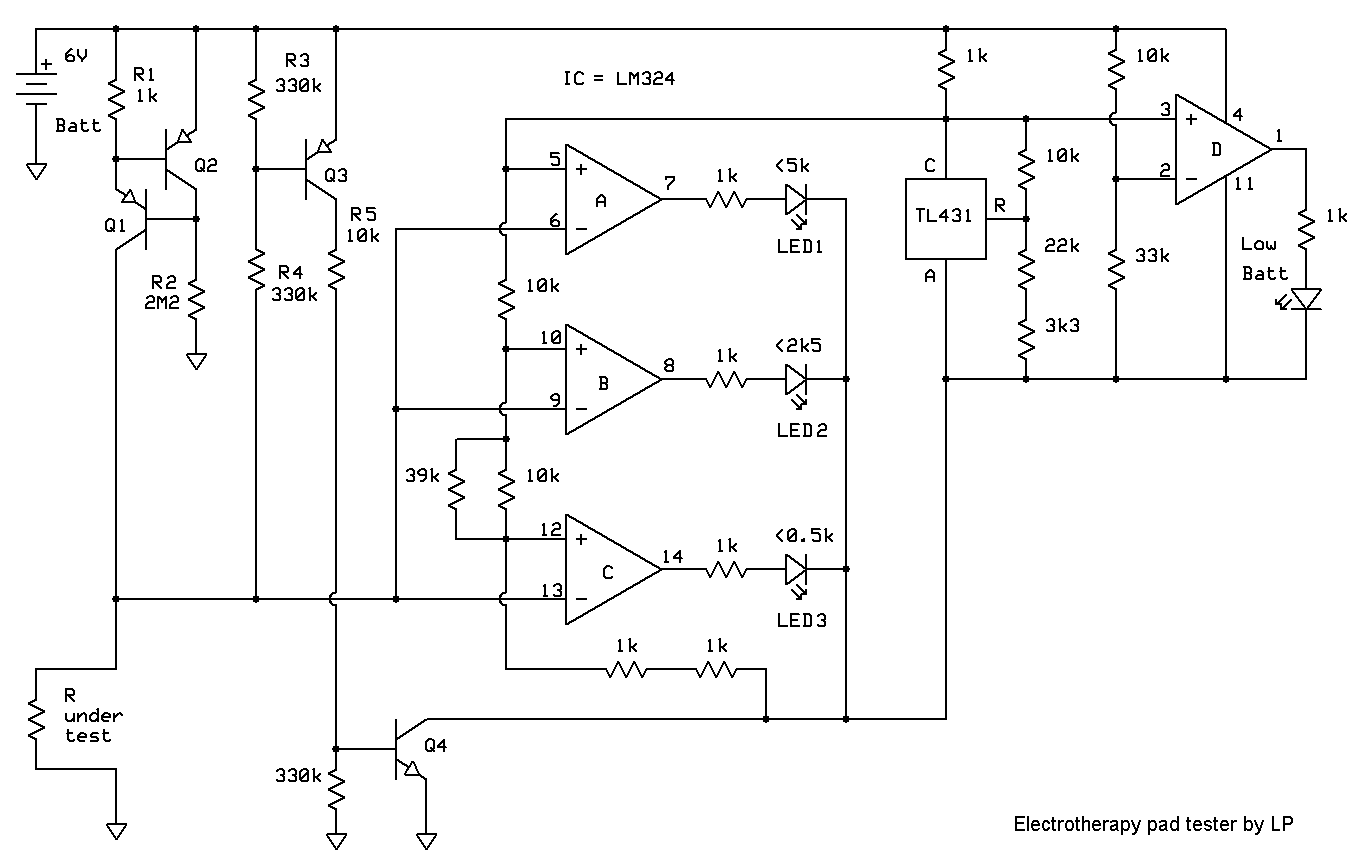This tester is a small handheld device able to measure the DC resistance of electrotherapy and TENS pads made out of conductive silicon rubber. It displays measurement result in easy to understand way, via a small LED-bar. Device is designed with the aim to be distributed to a number of remote physical therapy clinics so that regular quality control of the part of the equippment most prone to wear can be carried out regularly by the stuff members themselves.

The tester operates as a standard DC Ω-meter. Transistors Q1 and Q2 form a constant current source which is used to induce a voltage drop over the resistor under test i.e. over an electrotherapy or TENS pad. The more resistive the pad is, the larger the voltage drop. This is then measured by a bank of voltage comparators which in turn light up one or more LEDs.
Comparator thresholds are designed so that LED1 turns on if pad resistance is less than 5 kΩ. Pads like this should be considered rather bad but they still might be usable if therapy currents are not too large (it is up to the physical therapist to estimate the appropriate current level for each patient individually). LED2 turns on if pad resistance is less than 2,5 kΩ. This is pretty much Ok for most purposes, bud such pads should be checked regularly as they started to show signs of wear. LED3 turns on only if pad resistance is less than 500 Ω. Such pads are good.
How does the constant current source formed using Q1 and Q2 work? After battery voltage is applied, because Q1 base is polarised via R2 resistor, it conducts current through its emitter resistor R1 and through the pad under test. As soon as this current reaches such value so that voltage drop over R1 is higher than 0,6V, transistor Q2 turns on and starts taking away some portion of Q1 base current. This soon reaches equilibrium so that voltage drop over R1 is exactly 0,6V. This means that Q1 emitter and collector currents are constant i.e. they do not depend on electrotherapy pad resistance.
Because current flowing through the pad is constant, voltage drop induced over it is linearly proportional to its resistance. This makes calsulations of comparator bank reference voltages rather easy. Fourth operational amplifier in LM324 IC is used to indicate low battery voltage. An inexpensive TL431 parallel voltage stabiliser is used to produce temperature compensated reference voltages for all four compatarors.
A peculiar feature of the tester circuit is auto power-on function. If pad under test is connected to measurement contacts, transistor Q3 is polarised torough R4 resistor and it in turn pulls Q4 into conduction. Transistor Q4 then provides negative pole of the power supply voltage for the rest of the circuit. When no pad is connected to the circuit, Q3 and Q4 turn off; this leaves R2 as a sole battery load. Thanks to this function, battery consumption with no pad is approximately 3ľA - this is such small current that the tester doesn't ever need to be turned off. Forgetful electrotherapists are therefore not in position to negligently drain the batteries over night by forgetting to turn off the tester after use. But the moment a pad is put under test, the circuit is up and running.

